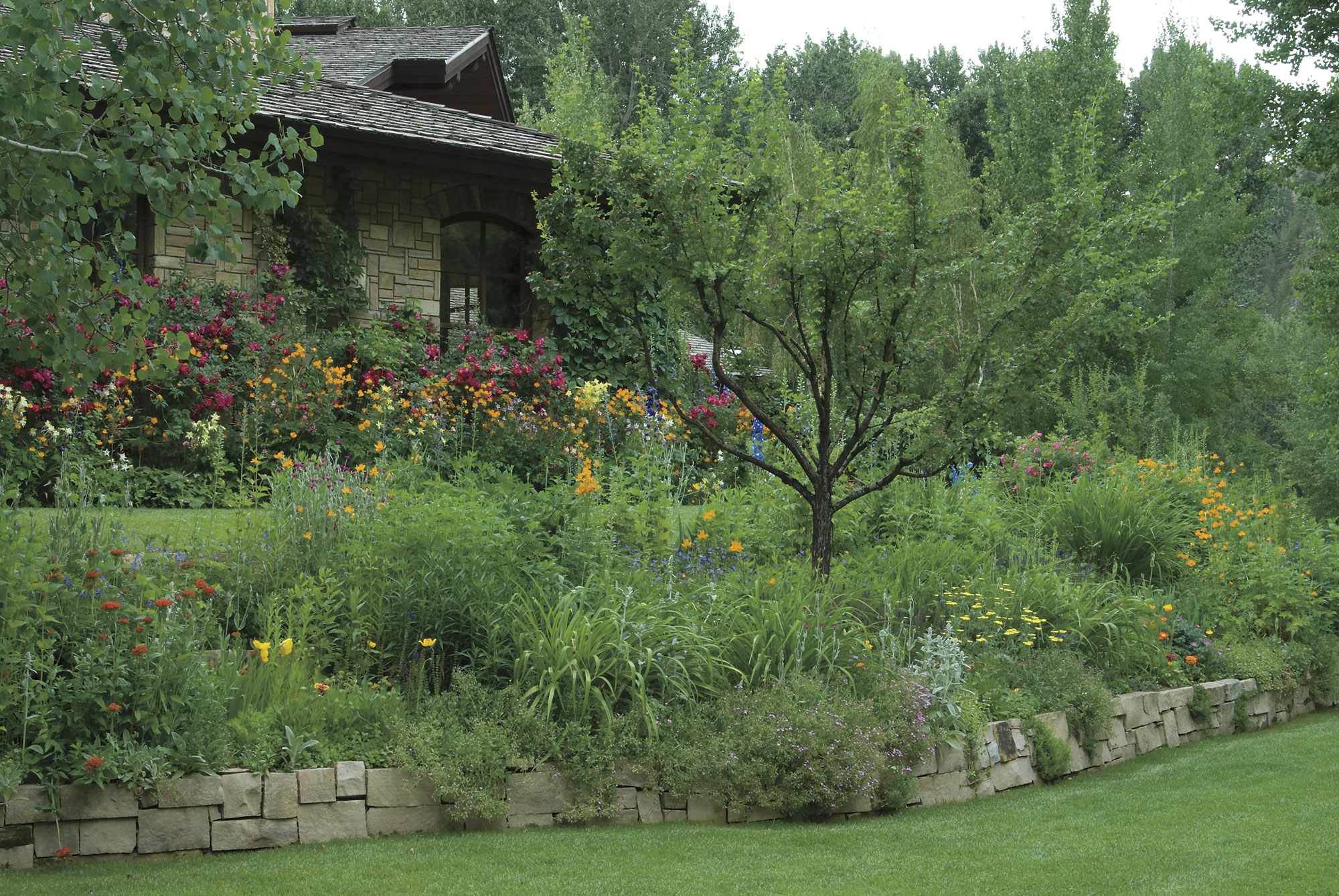
30 May Love's Labors… Gained
VISITING JANE STURDIVANT'S GARDEN, it becomes apparent that this place is loved. Deeply. Between the staccato sounds of snipping and raking, gentle murmurs between Jane and her longtime head gardener, Lynn Clarke, detail the subtle daily changes. Friends and family all have a favorite story related to this special place; everyone feels a bit of ownership. Perhaps it is that sense of ownership that makes this garden what it is. There is a spirit here.
“This garden is undeniably gorgeous,” admits Clarke, “but the real beauty of this special place is the spirit of collaboration and sharing. Jane gets every bit as muddy as the rest of us, and whatever we learn, we get to share with other gardeners in our valley. It’s a wonderful give-and-take of information in our extreme climate and location,” she says.
The harsh, arid climate of the Mountain West makes any garden here a precious, nearly sacred place. Long, snowy winters, short growing seasons, extremes of drought or avalanche, all test even the most experienced and dedicated gardener. But Jane’s garden has developed over the past 11 years partly because she and Clarke possess a deep and abiding respect for the qualities particular to life at this elevation — Hailey, Idaho’s 5,312 feet.
Microclimates that can be found or fostered within most gardens have been thoroughly investigated here, in the spirit of sharing knowledge with other high-altitude gardeners and in Jane’s mischievous proclivity for breaking convention and questioning rules.
“We are always experimenting and changing things in the garden,” Jane cheerfully admits. “We’ve had some success with plants not known to grow in our area, and have been unsuccessful with others that should be fine here. In heavy winters, we have large populations of deer and elk living in the garden, and of course, that has altered our choices. For instance, many pine varieties are not in the garden any longer because they have been completely consumed by wildlife.”
In most gardens visiting wildlife is considered beautiful, but worrisome. It is not charming to observe deer nibbling a carefully espaliered pear tree. But in this garden, wildlife visitors are expected and welcomed. In fact, their presence is planned into the garden. For instance, along the boundaries closest to the Big Wood River, apple trees are espaliered in flowing rows as a distraction to wildlife.
“The espaliered rows along the river tend to move the animals along the edges of the garden, rather than into the center. Only occasionally do we have to wrap a tree to discourage the animals. We’ve lost a few to them over the years, but that’s simply part of gardening in an area teeming with wildlife,” Jane says. “I am just the steward of this land; the animals were here first.”
Not all areas are left open to the animals, however, and one part of the roughly three-acre garden’s design became obvious almost immediately. Vegetables and herbs are grown inside a beautiful raised garden surrounded by a tall, ornate, wrought iron fence that shows the lush crops to wonderful advantage. It is a sort of culinary oasis, an elegant setting that allows visiting wildlife only what they can nibble through the fencing. Burgeoning Champagne grape vines offer some shelter from the wind along one side of the vegetable garden. Formal, geometric plantings of leafy lettuces balance the rambunctious climbing vines and hanging baskets overflowing with edible flowers. The requisite tomatoes flourish in protected beds, luxuriant in the radiant heat from the brick and stone borders and paths.
In her trademark way, Jane turned another design practicality into an opulent solution. The short growing season in the Wood River Valley, combined with Jane’s penchant for unusual plants, requires an early start each year.
“My husband, Peter, and I designed the conservatory. It echoes the architecture of the house, and was built with the house by Peter,” Jane reminisces. “The conservatory is my favorite place in the house during the winter. The high banks of snow on the outside, while inside the fountain bubbles, the Gouldian finches twitter, and the orchids bloom … it’s completely intoxicating.”
And, oh yes, it also has the wonderful function of providing an environment where seeds will germinate, cuttings can root and dreams of the new season can bud.
The Sturdivant garden was also designed for meandering, on foot, or astride one of Jane’s beloved horses. Bridle trails and footpaths lead to surprises around nearly every bend: pools of water with small benches nearby, partially visible architectural accents, heavy stone balls, statuary, bird feeders and a collection of birdhouses tucked away in a shady grove. An ancient English well echoes with the soothing sound of water plumbed to gurgle in its depths.
Jane Sturdivant’s garden is an everchanging collaboration of inspiration, dedication, inquisitive experimentation and knowledge gained over time. The resulting spirit emanates from every corner, nurturing humans and animals alike.
- Jane rides one of her horses through the garden. Animals are as welcome as people throughout the grounds.
- A Deborah Butterfield horse sculpture surveys Jane’s vintage Mustang.
- The fenced vegetable garden is one small area protected from four-legged wildlife.
- Jane purchased antique saddle stones on a garden trip in England. She discovered them in the Cotswold region, where they were used to elevate grain crates off the ground as a deterrent to rodents.
- Intimate seating areas provide ideal spots for solitude and rest.
- The conservatory provides a visual connection to the gardens year-round. Furnished with an Italian glass chandelier (at top) and a mosaic table created by Jane, the space features gloriously colored finches, lush orchids and citrus trees even during Idaho’s heavy winters.
- Lynn Clarke (left) head gardener with Jane Sturdivant and her canine menagerie.
- Sculptures are chosen and placed as carefully as the plants, creating structure for the garden throughout all seasons.
- The garden and grounds are dotted with sculpture and functional elements such as short stairways that add form to the area throughout the seasons.





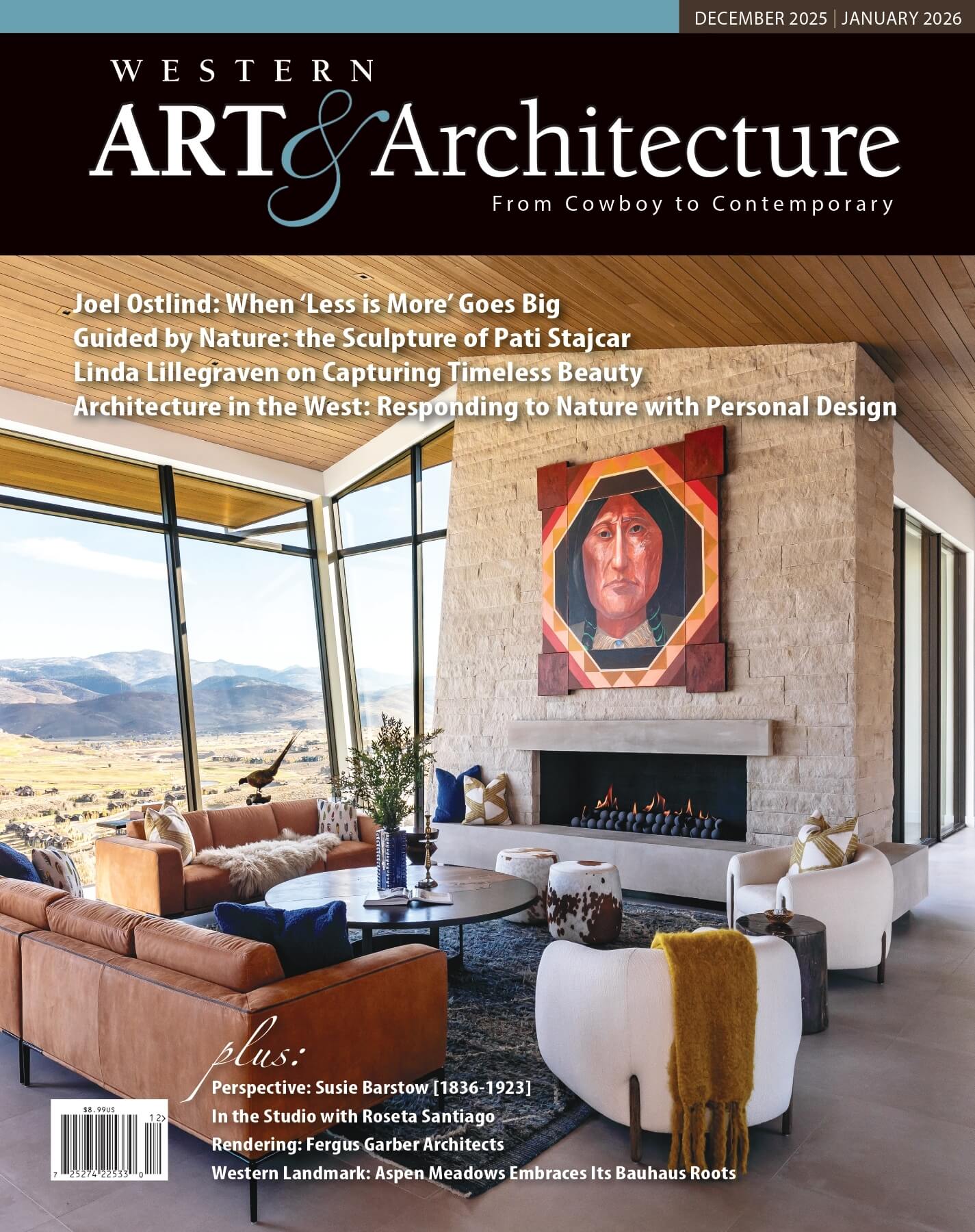
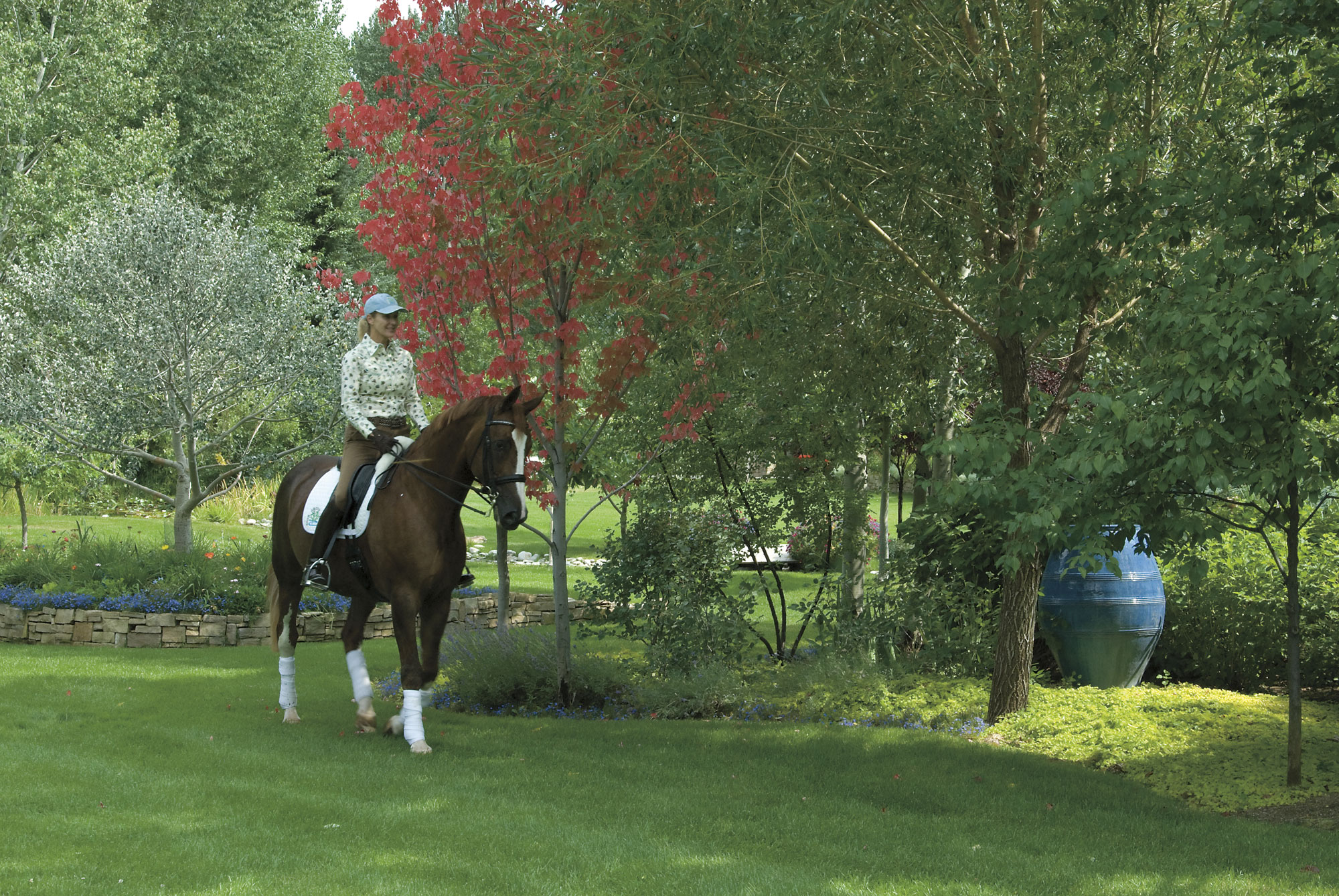
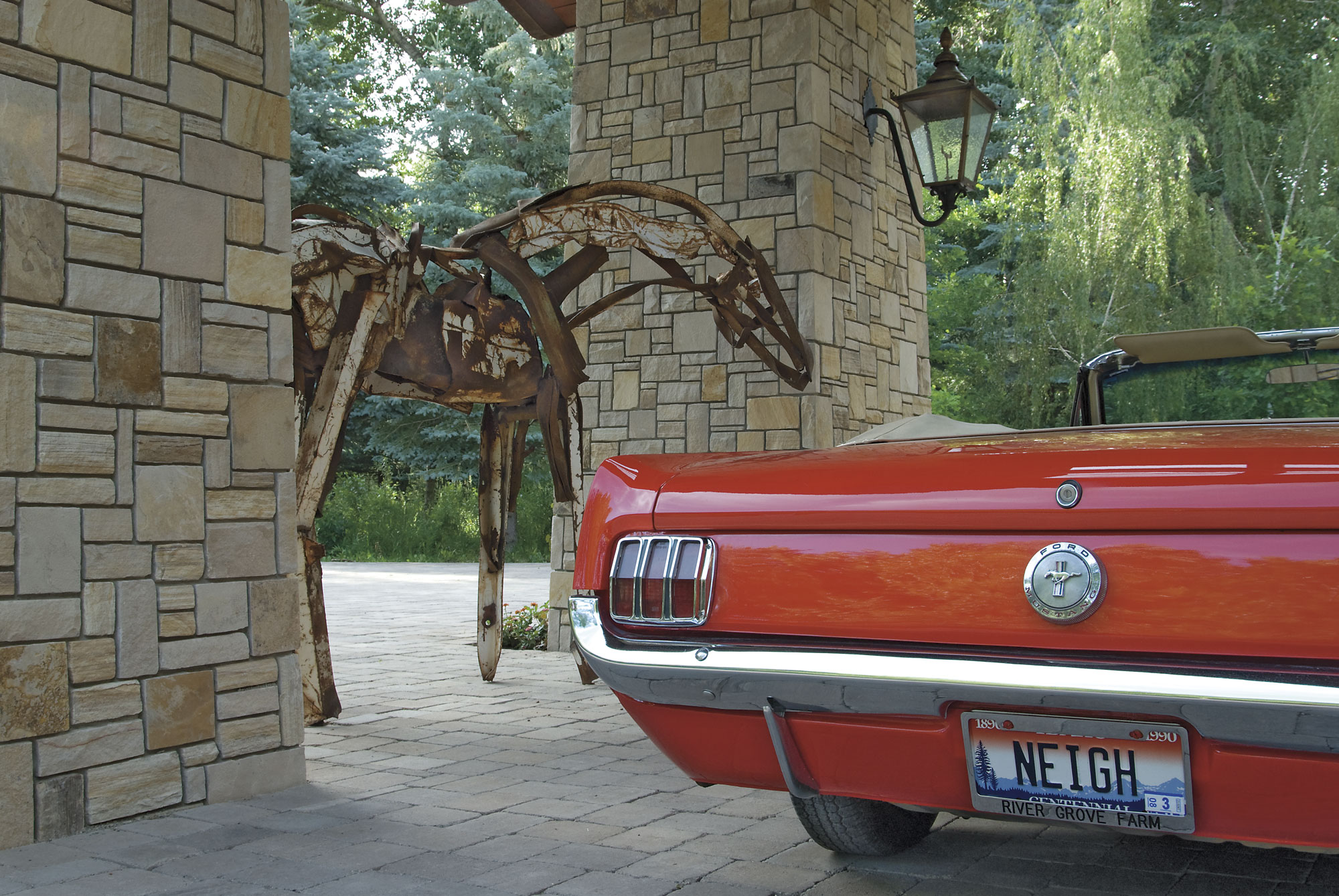
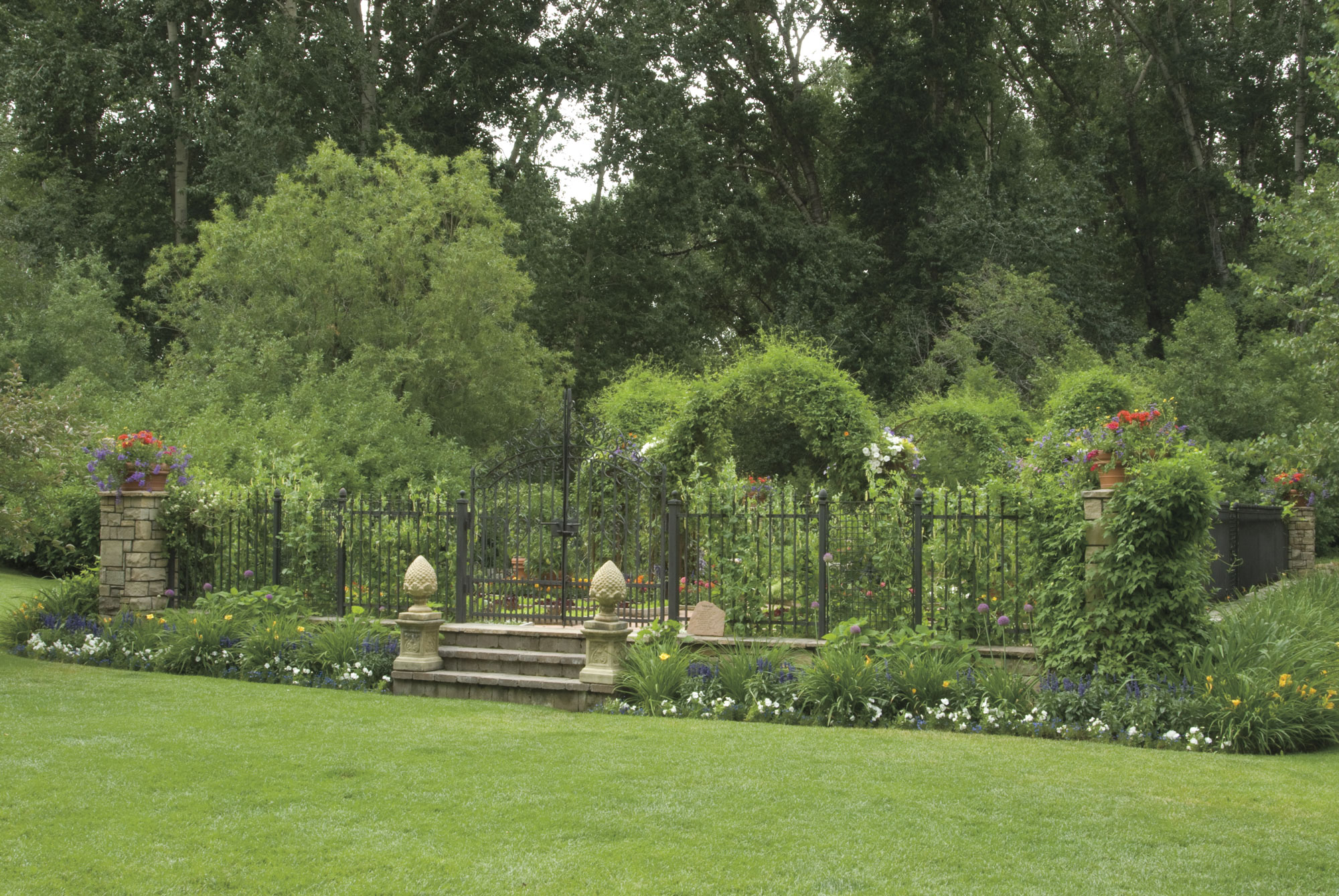
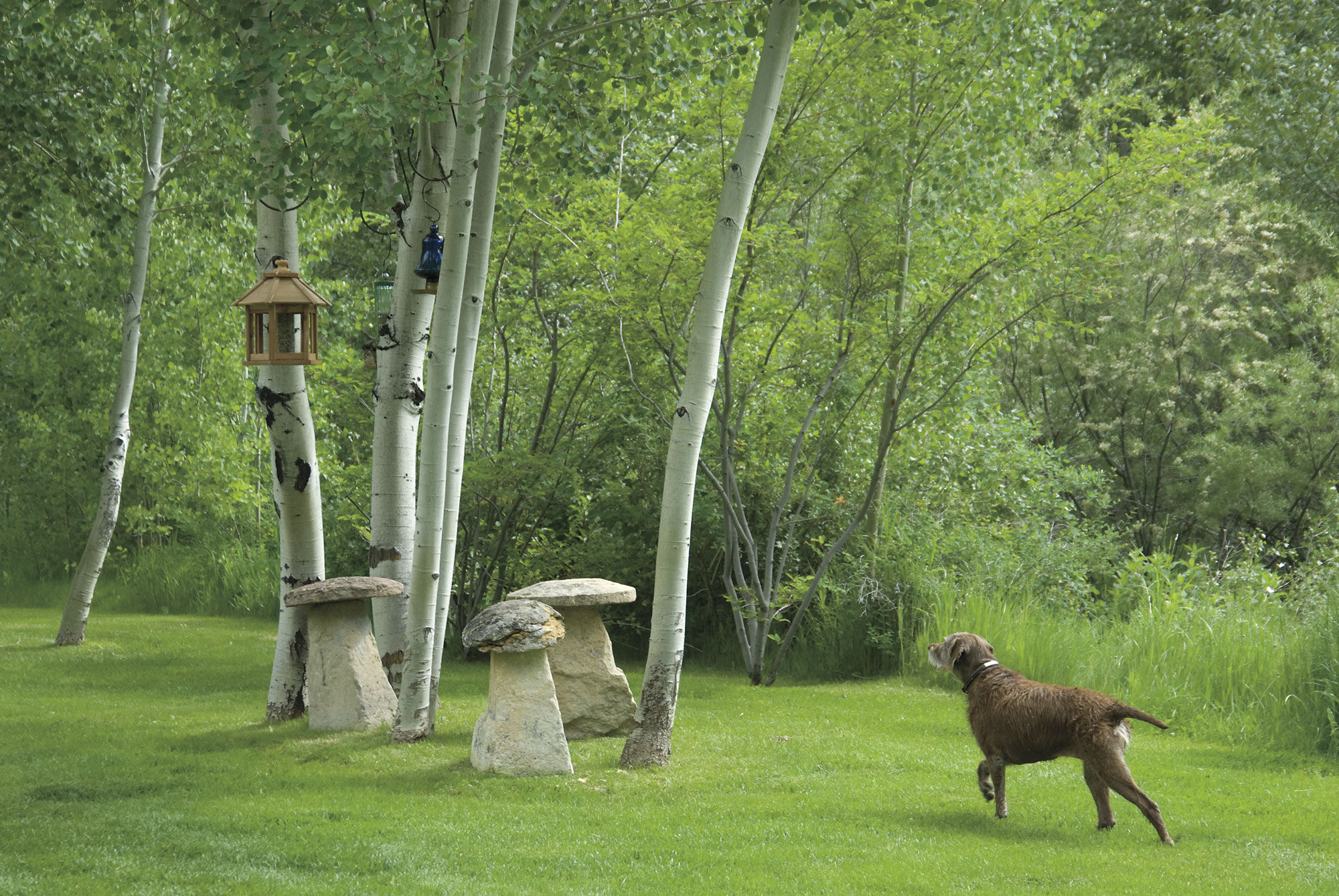
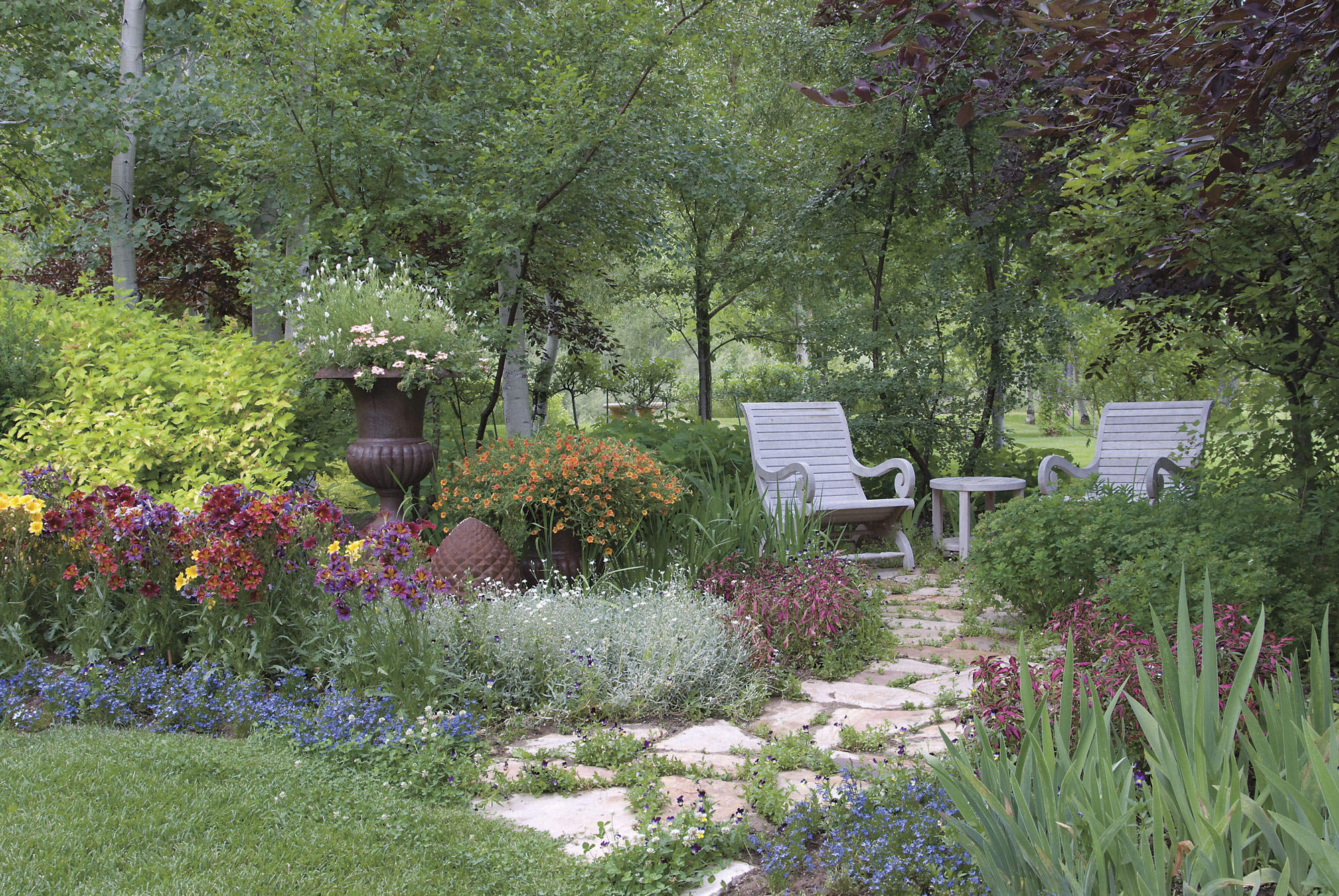

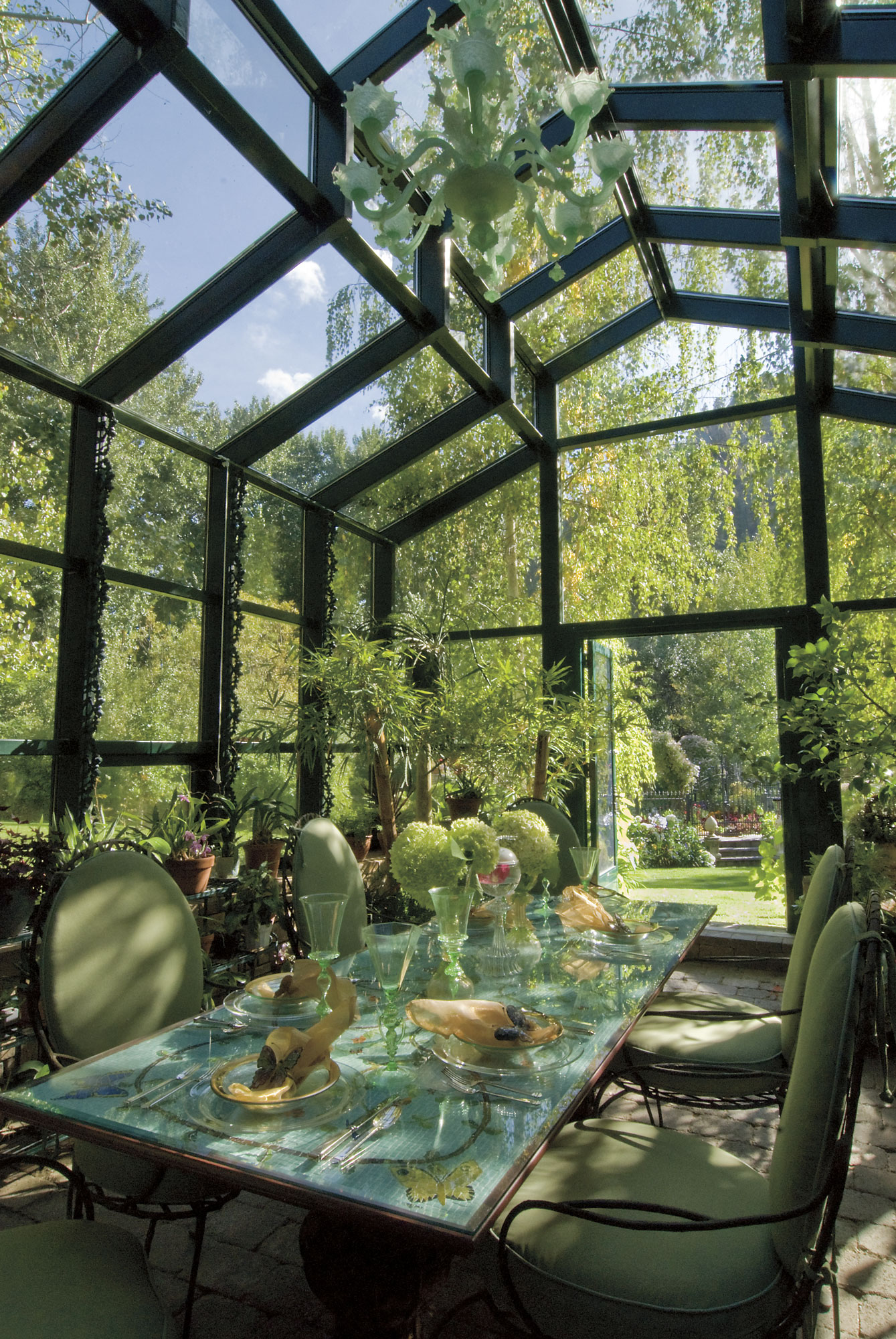


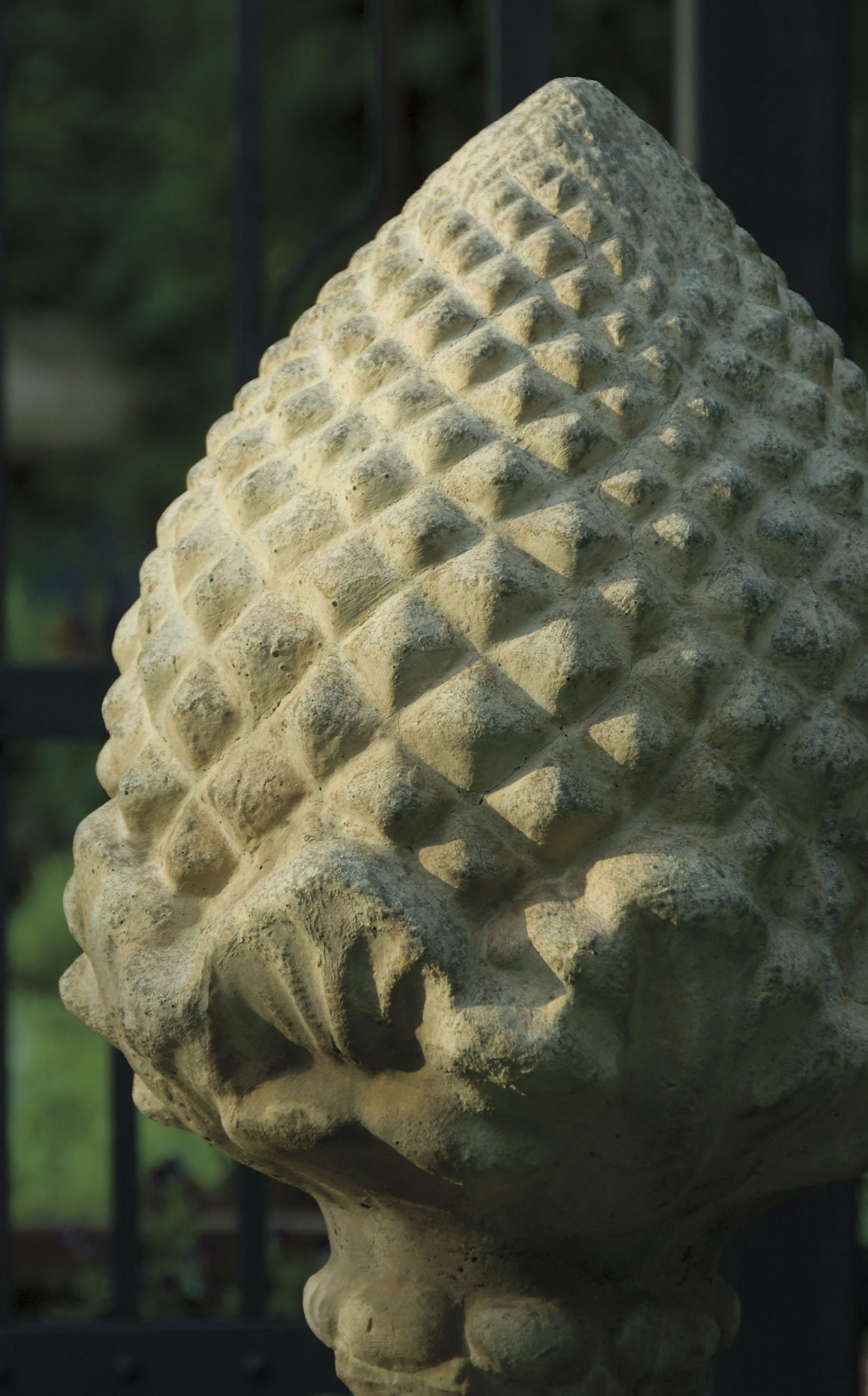
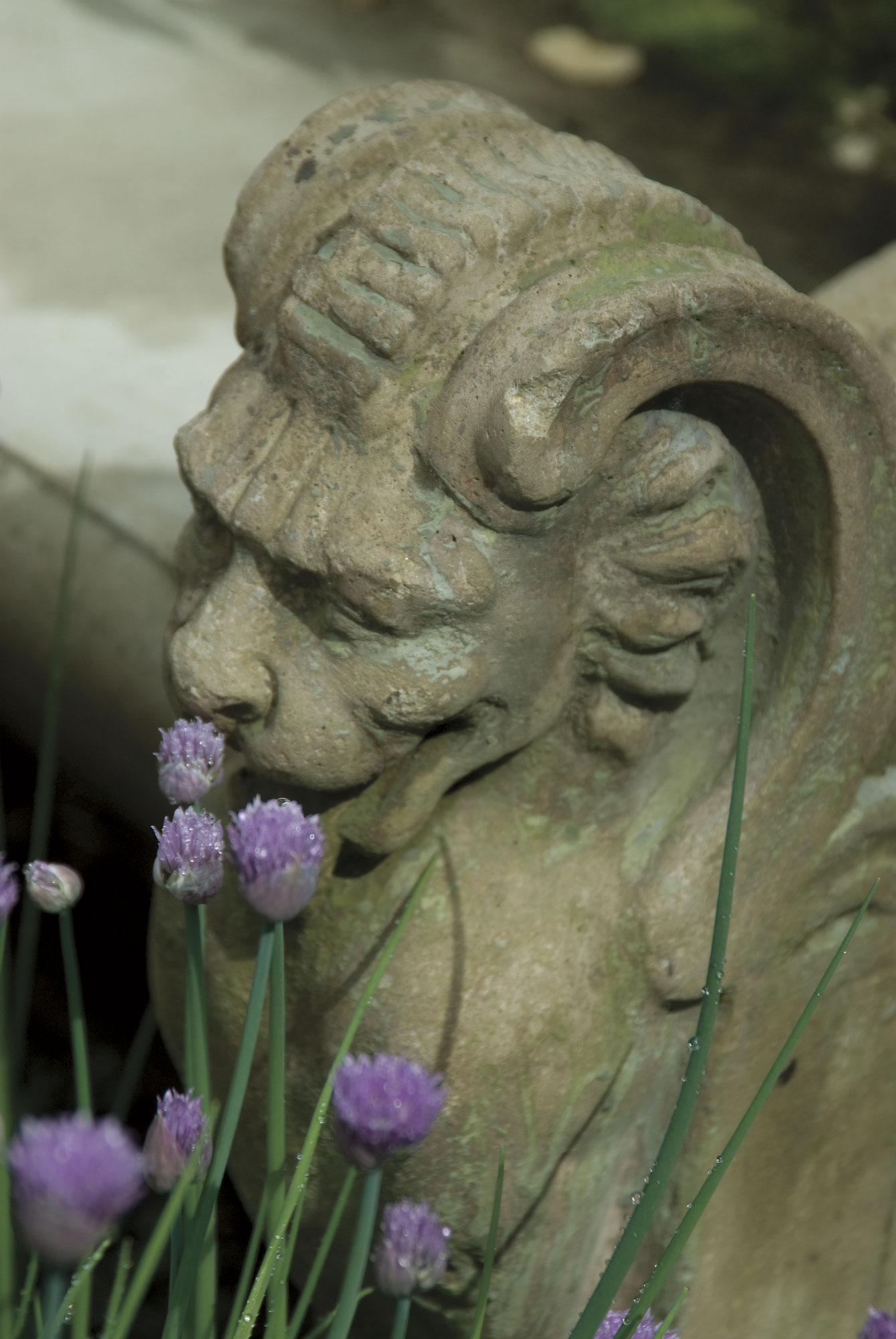
No Comments